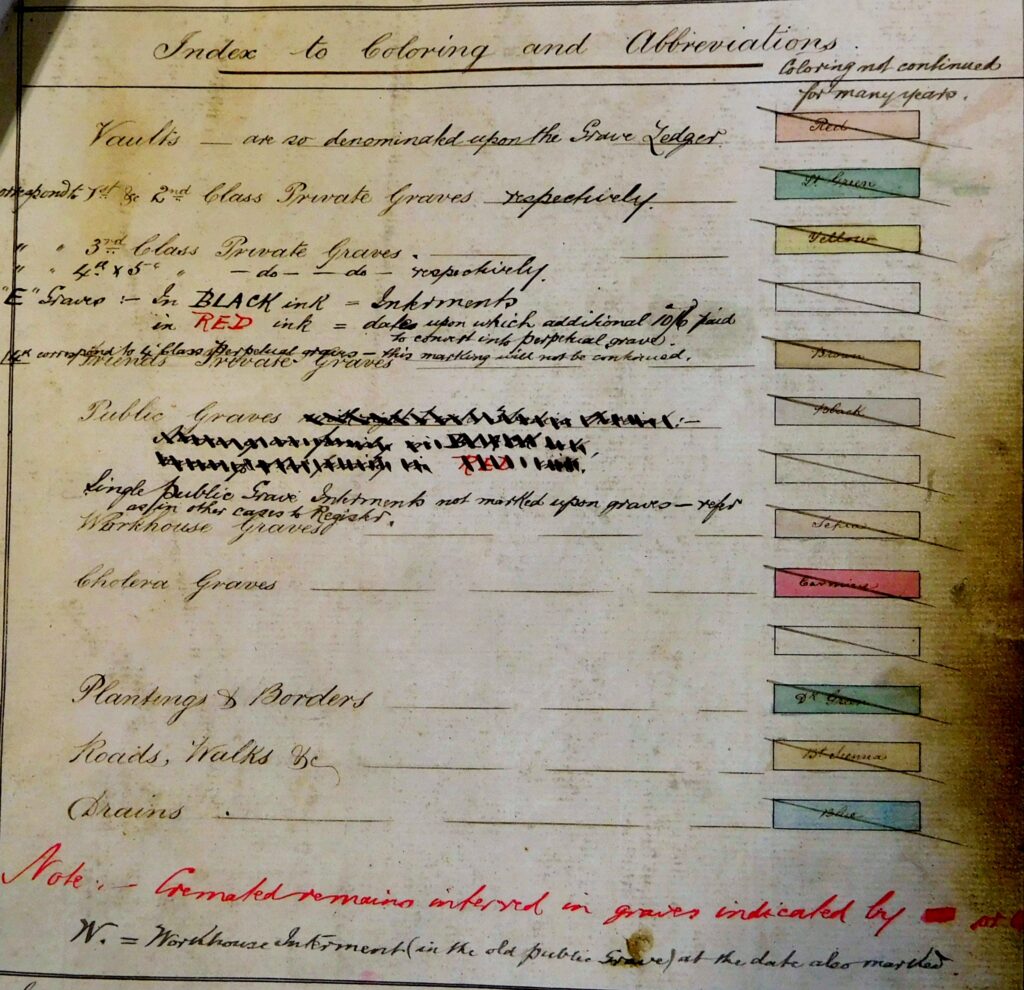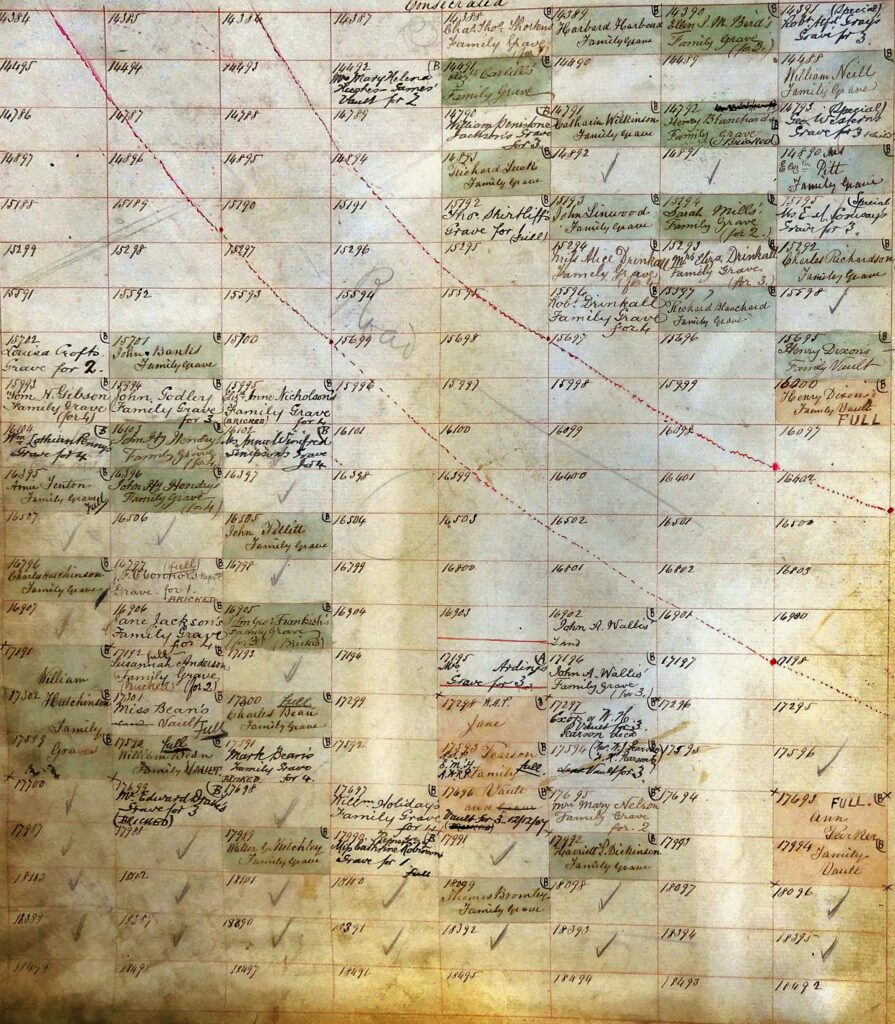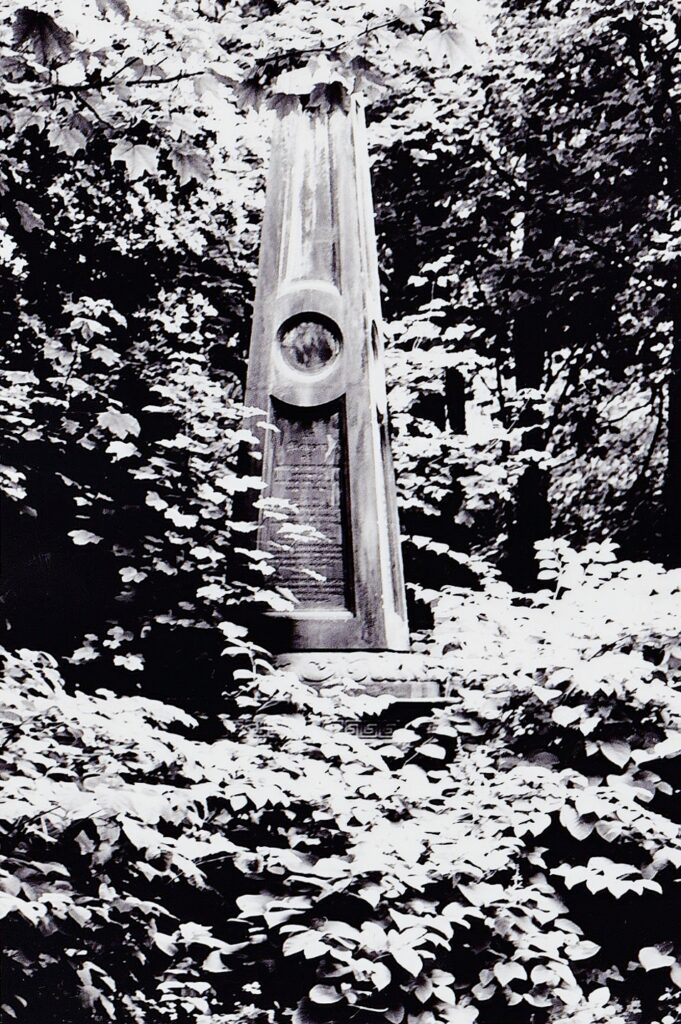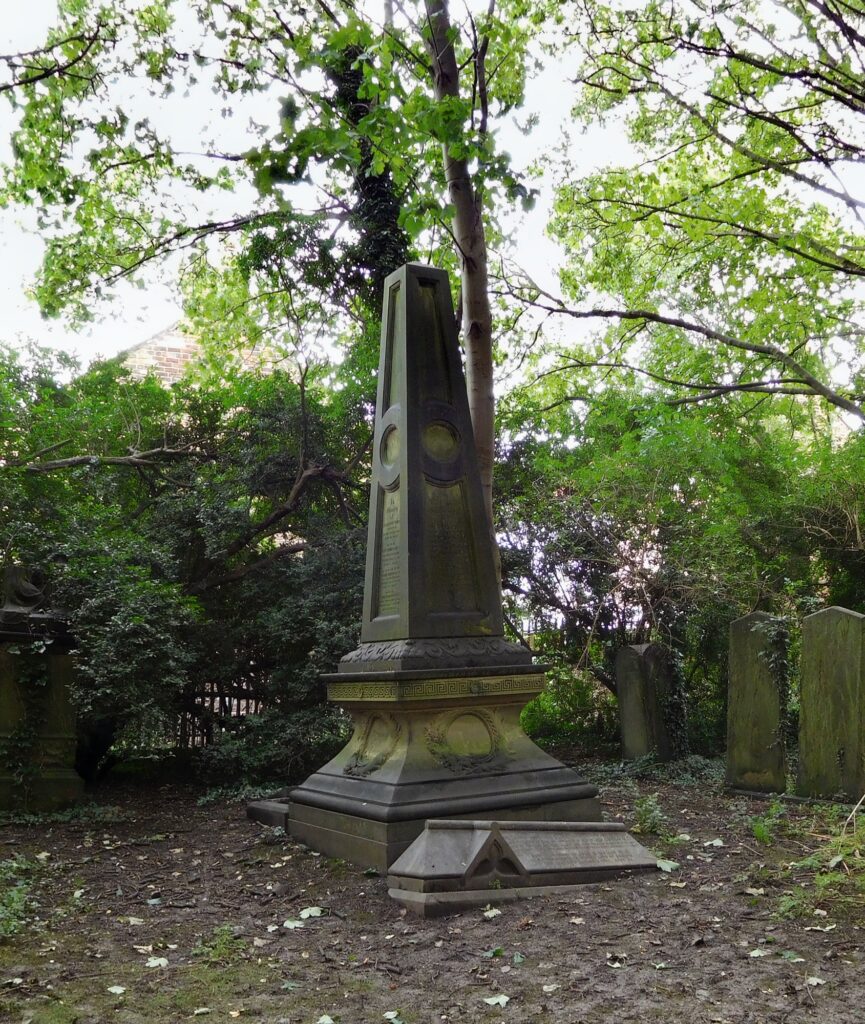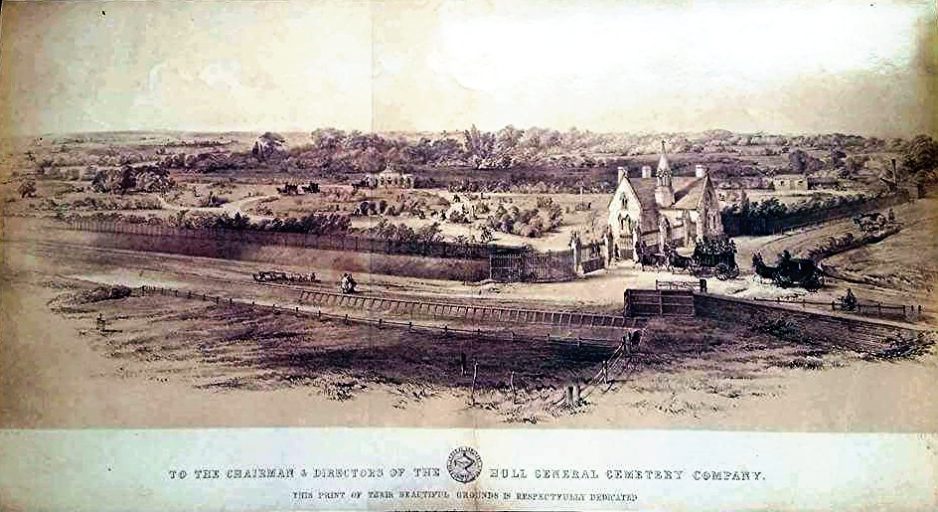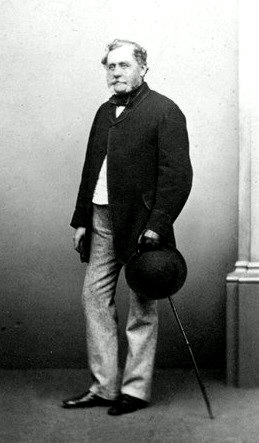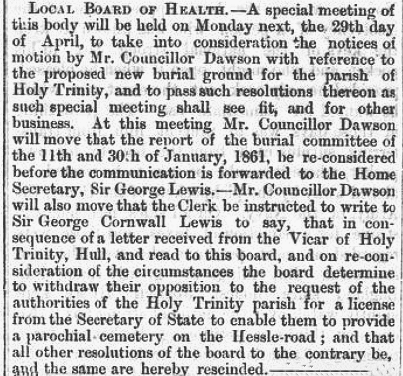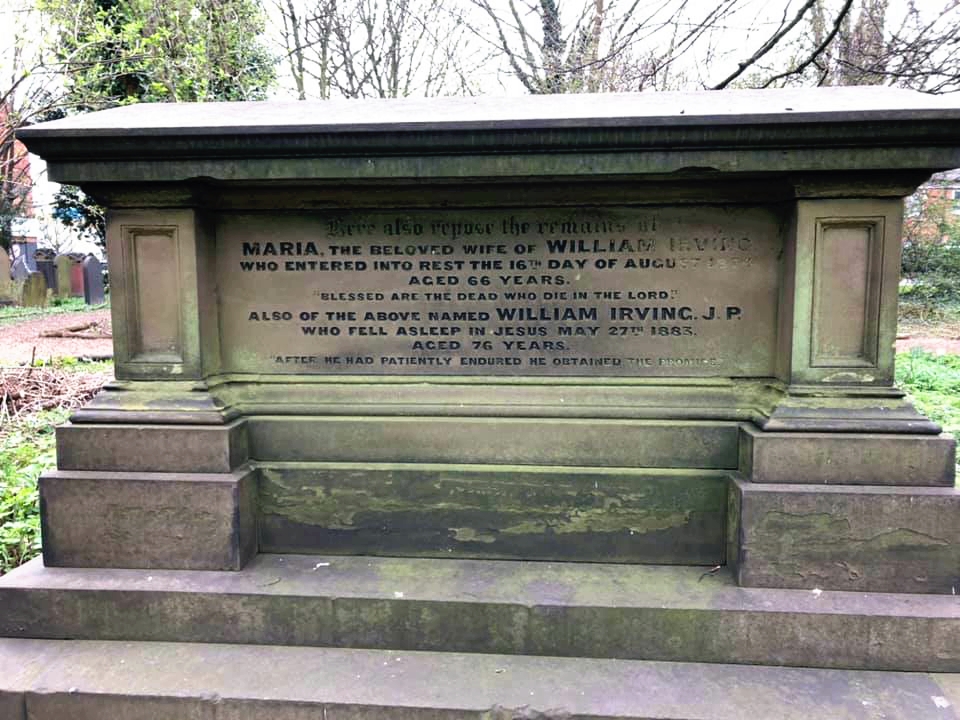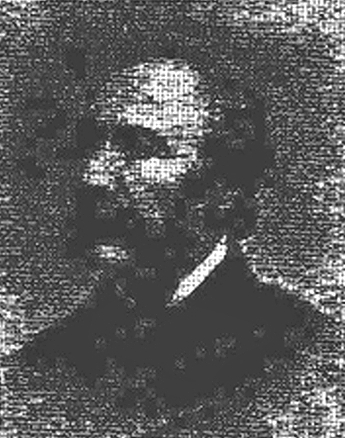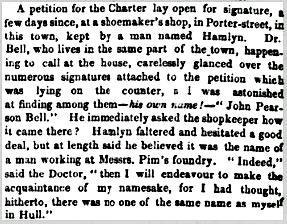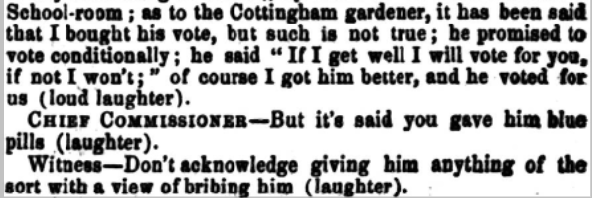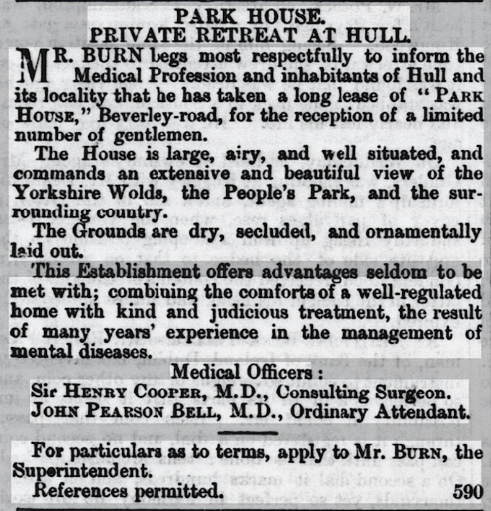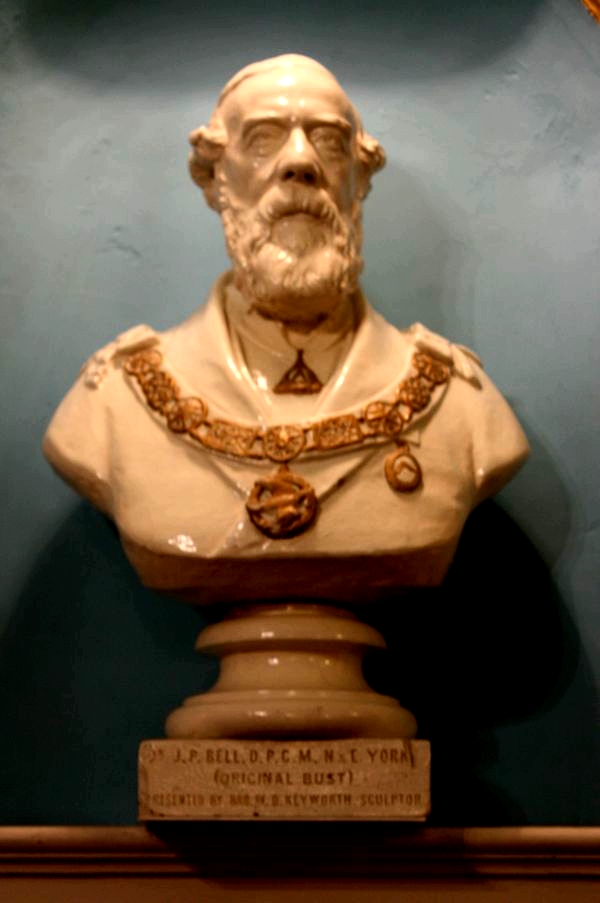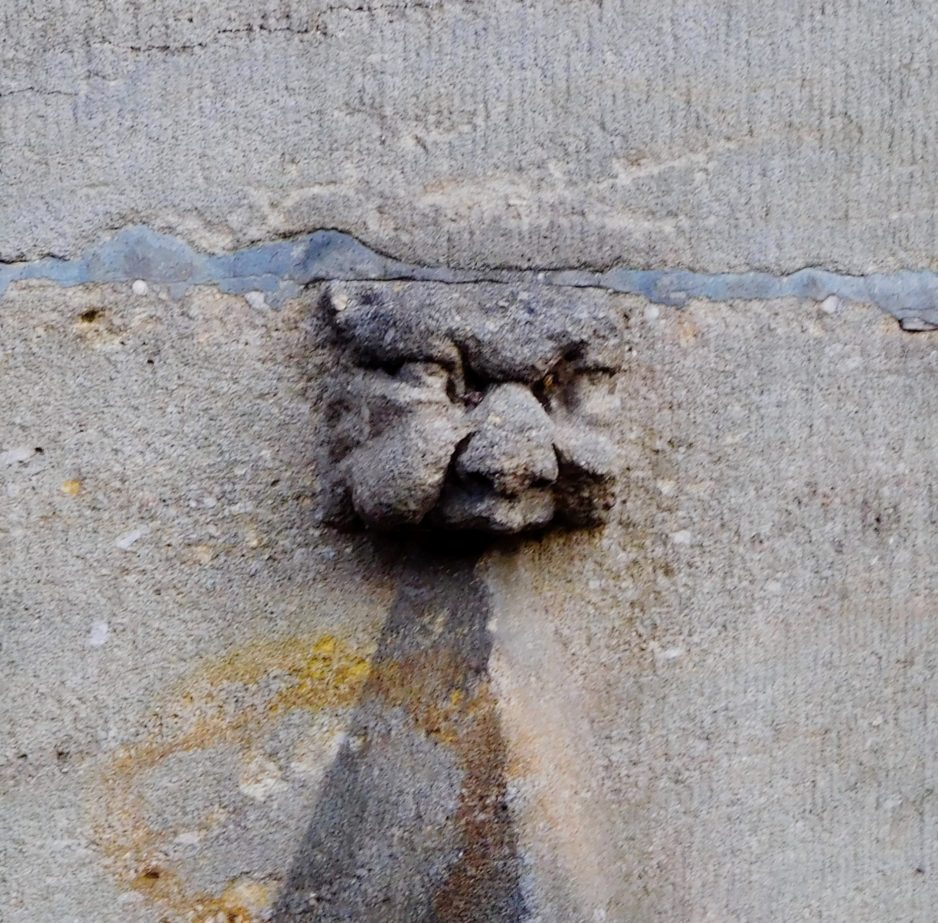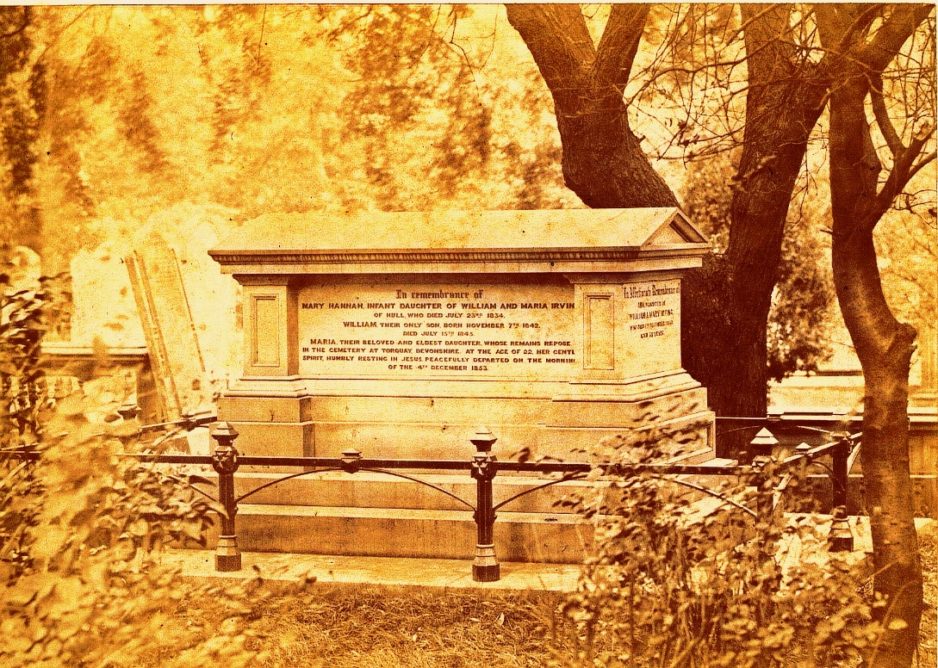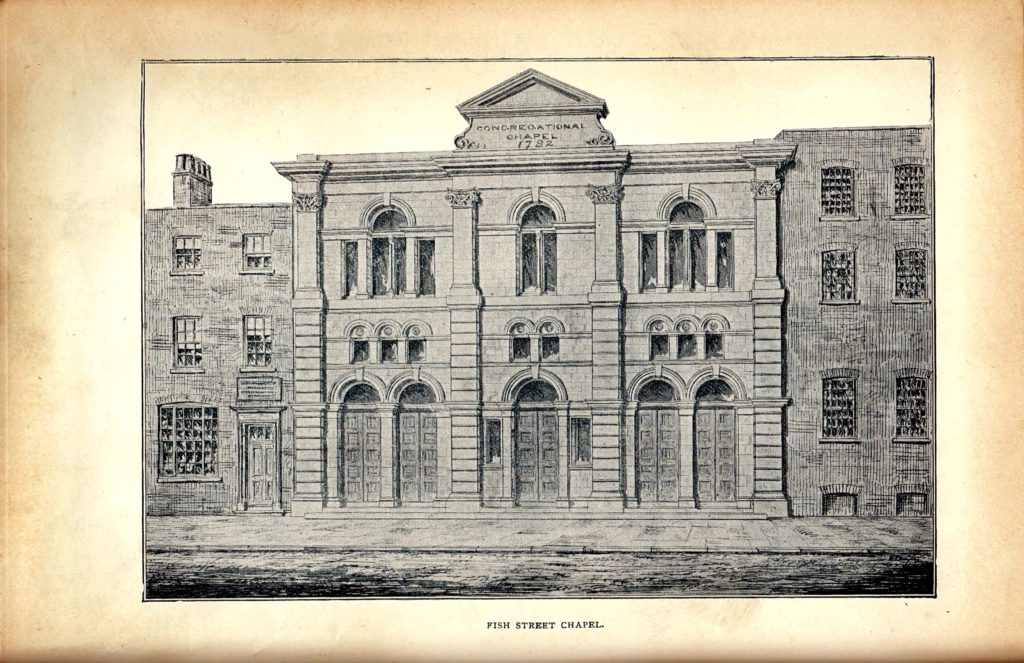The anniversary this month is poignant. It marks 50 years since the Hull General Cemetery Company dissolved itself. Since that time the site has undergone some changes; some good, some not so good. It has changed ownership for better or worse. The site has been ‘developed’ and then allowed to sink back into the ‘decay’ it had been in before that ‘development’. One could say that Hull General Cemetery has had mixed fortunes since the last meeting of the shareholders of the company took place.
But that was in the future. In June 1972 no one knew what would happen to the site, least of all the Company, and neither did its future owners, Hull City Council. At no time did it seem certain that Hull City Council would become the owners. Although, quietly and behind the scenes, some activity told a different story.
Let’s look at how the Council did take over and this story may take us all back a lot further than you’d think.
To sell or not to sell
On the 14th December 1853 the company received a letter from the clerk to the Local Board of Health. This body had recently been set up in response to the Public Health Act of 1848. Amongst its many duties was the control of burials within its district. It was with this duty in mind that Mr Wells, the clerk, wrote to the Company. Mr Wells said that he had been instructed by the Parliamentary Bill Committee to ask the Company to name their price with regard to selling their cemetery.
This letter on the face of it was straightforward. Basically it asked for the company how much they wanted for selling the site. Underlying that letter though was an implied threat. This threat was that the Parliamentary Bill Committee were, at that moment, steering a bill through Parliament that sought to ‘improve’ the town. Part of that improvement was the right of compulsory purchase of the cemetery. That the letter came from this committee rather than the Local Board of Health itself would not have been lost on the Directors.
It also cannot have slipped the Directors’ minds that the Local Board of Health’s solicitor had written to them in November. This November letter was much less friendlier. It stated that,

The threat of the Local Board of Health (LBOH) to compulsorily purchase the cemetery coupled with the oblique threat of erecting gas works in front of the entrance of the cemetery would have been fresh in their minds.
A more emollient approach
The December letter stated that the LBOH,
‘would be glad to receive from the Company an offer to sell to the local Board of Health for the benefit of the Borough the Hull General Cemetery and all its property rights and interests.’
A reply was requested by the 22nd. The company replied saying that, ‘it was not their present intention of the Company to part with their cemetery.’
The following February 1854 another letter arrived. In this the Parliamentary Bill Committee suggested that three directors should meet three LBOH members with a view to settling this issue. The Company agreed to this and dispatched the Chair, John S. Thompson, William Irving and John Pearson Bell to this meeting.

Suffice to say that both parties attended the meeting with their own agenda. Although there were glimmers of agreement it was not wholly successful for either side. The Company did agree to sell the cemetery to the LBOH but they wanted the LBOH to come up with a price first. However the LBOH did not do this and the matter was not pursued. No doubt the LBOH felt that their Act of Parliament would gain the cemetery for them. They were in for a surprise.
The Acts of Parliament
For the Cemetery Company were also pursuing this approach. It became a race which Act would be enacted first.
As such both parties set to with a will to get their respective Acts of Parliament through the next session of Parliament. By 1854 the Corporation had their Hull Improvement Act in place that would have enabled them to purchase the cemetery. However the Company had managed to get their own Act in place. This forestalled any municipal authority from compulsorily purchasing a cemetery established and incorporated by an Act of Parliament. Stalemate. A couple of years later anther approach almost made it over the finish line but was scuppered by greed. You can read about it here. An Anniversary: June 1856
And so this state of affairs continued for the next 120 years.
Having said that, the fortunes of both parties altered significantly over time. In 1854 the Company was definitely in the driving seat. In effect it could name the conditions upon which it would sell. This was its highwater point. After this the pendulum swung the other way. By the turn of the 20th century the company would have been glad to sell the cemetery but the Corporation now had its own burial grounds and was content to wait.
One hundred years later
By the middle of the 20th century the chair, Arthur J. Downs, a relative of Rose, Downs and Thompson, the engineering firm, was reporting to the Company AGM that negotiations to sell the site to the Corporation were stalling.
‘It was noted that the corporation were insistent that steps be taken to recall capital as a condition to their considering the matter further. As such the matter was not competent business for discussion at an Ordinary General Meeting, it was decided that the new board, when constituted, should take up negotiations and refer back to the proprietors as necessary.’
Recall of Capital
This issue of ‘recall the capital’ refers back to the foundation of the Company. Avid students of this subject will remember that the initial shares in the company were sold for £10. Out of that £10 only £1 of that was asked from the shareholders by the Company. The Company had, from its beginnings, worked on income it generated and initial lending via bonds. As such the original shareholders reaped the benefit of dividends for over a hundred years without actually paying the full price for their shares.
By the time the Company found itself in financial trouble many of the original shareholders had died or their families had moved away. Thus the Company felt it was unfair to trouble the descendants for the remaining £9 owing.
Sadly, the Corporation didn’t view that particular issue in such a misty-eyed way. They demanded that before any purchase of the cemetery this money should be paid into the cemetery coffers. In this way the Corporation felt that they would not have to pay the entire cost of attempting to bring the site back to a healthy state. Upon this rock all future negotiations foundered.
1955
By 1955 two changes had occurred. Firstly a new chair was installed. This was Clifford Hookins Ashburn. A solicitor, like many of his predecessors. As such he perhaps saw more clearly that the present situation could not continue.
The second change was that on the 27th January that year the nettle was grasped. At an Extraordinary Meeting of the proprietors a resolution was put forward. This stated that,

On the face of it this resolution would allow the Company to continue negotiations with the Corporation. However an upset at the meeting changed things.
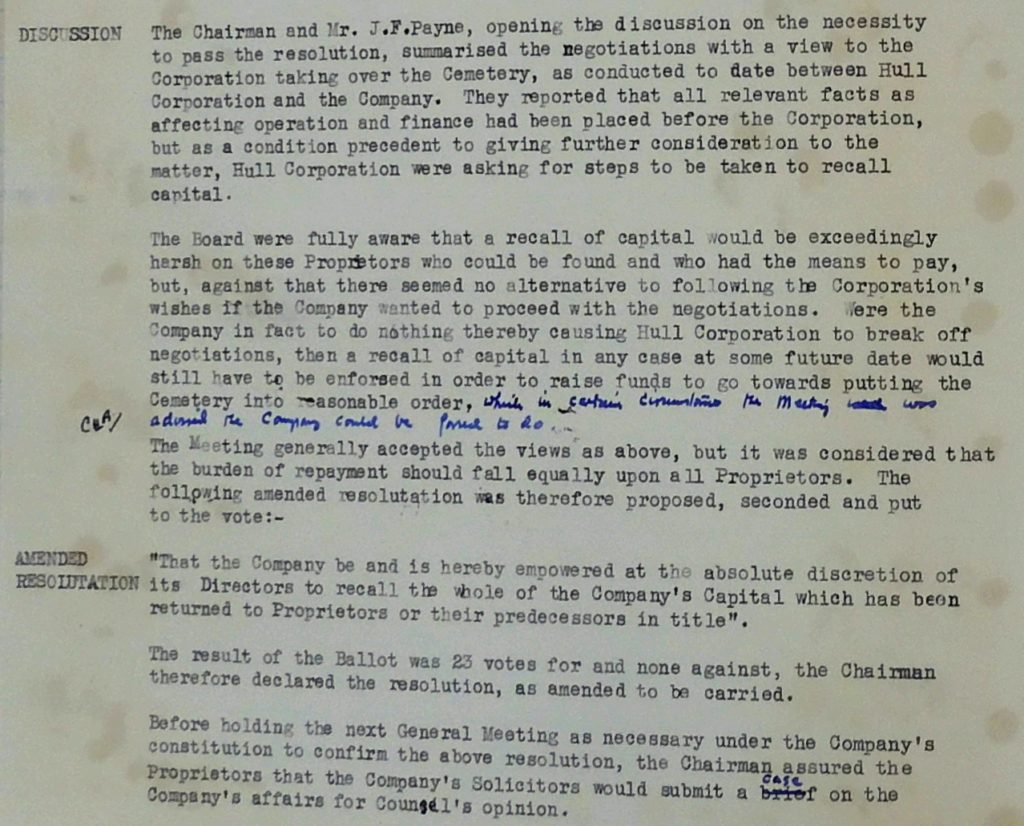
So the ‘burden’ of paying the £9 owing would not simply be taken up by the remaining proprietors but also by the relatives or descendants of all the shareholders. Some of these people may not have known they were shareholders in the Company. Those old shares could be mouldering in a trunk in the attic or have been lost over the intervening period of a century. It’s doubtful whether any of them had received any dividends over time as addresses would have changed.
This put the Company in an invidious position. They would now need to source where these ‘missing’ proprietors were and that would take money. Something the Company were sadly lacking in.
The offer of a deal
Realising that this task was impossible. the Chair and the Company’s solicitors, Payne and Payne, had, by June 1956, opted for hopefully an easier way. They approached the Corporation to accept £3 10 shillings per share rather than the full £9. The Board thought that this approach at least passed the buck back to the Corporation. The Board felt that it showed their willingness to compromise on the issue and provide a solution.
By January 1957 the Board heard that,

Roscoe’s Report
At a board meeting on the 21st August that year the Directors were informed that the site visit had been undertaken. Mr Roscoe, the Corporation Parks and Burials Superintendent, had visited the site. In researching this article I have not had sight of the report. However what we do have is a resume of the report and the conclusions of the Town Clerk, J Haydon W. Glen. It’s not pretty reading for the Company.
It starts quite positively and then takes a turn for the worst.
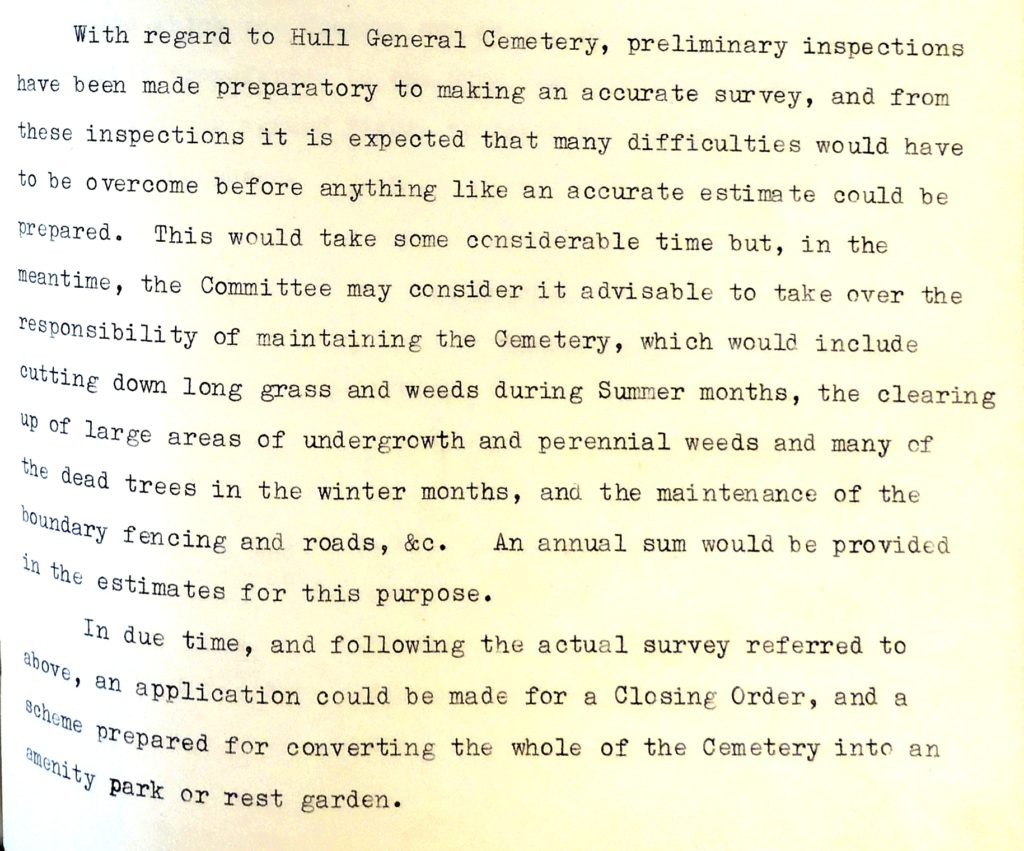
It went on to say,
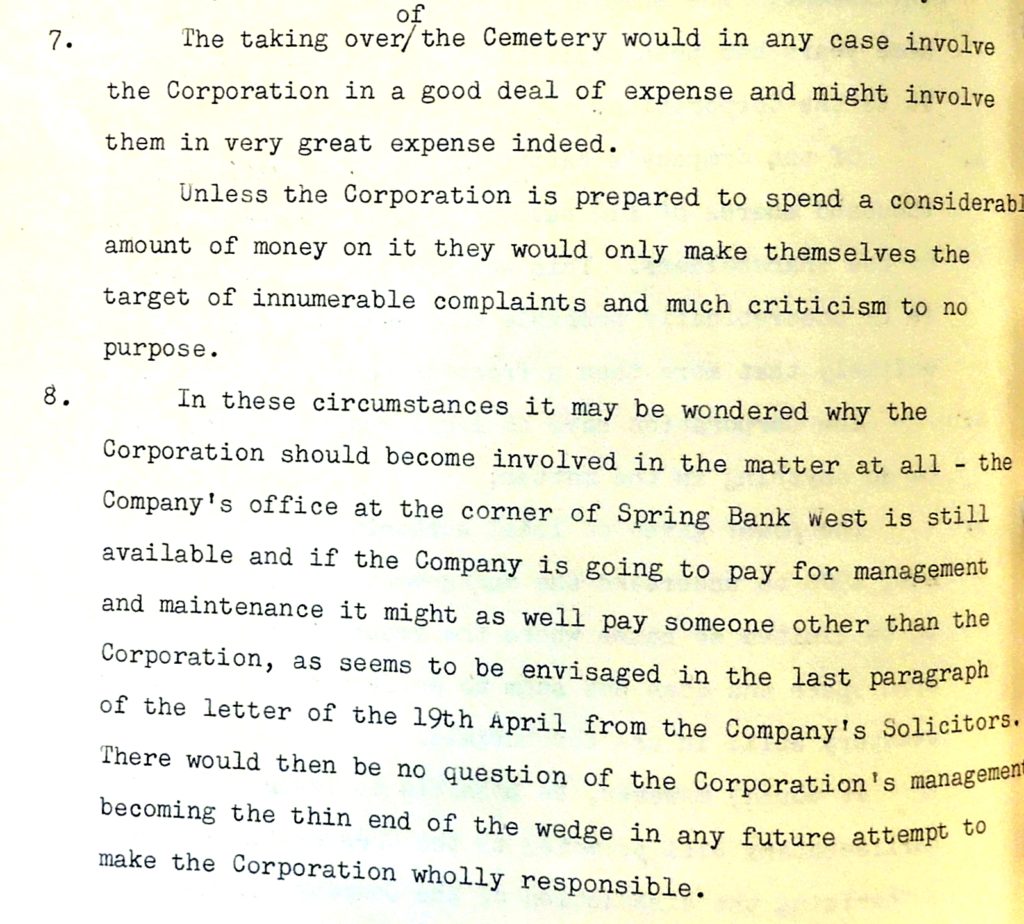
The resume by the Town Clerk was simply saying that the Company had managed to get itself into this mess, was still in business, so should endeavour to get itself out of it. As it says, ‘it may be wondered why the Corporation should get involved in the matter at all.’ And an objective observer would probably agree with them. It needed the Company to fail completely before the site could be rescued.
With that report, the hope that the Company had of the Corporation taking the site over was gone.
1966 and all that
In November 1961 the Company formally recognised this and recorded that they would not approach the Corporation again. The issue resurfaces indirectly in November 1966 when the Company asked for another look at their own counsel’s advice from a decade ago. This advice had been to sell the site quickly as may be seen below,
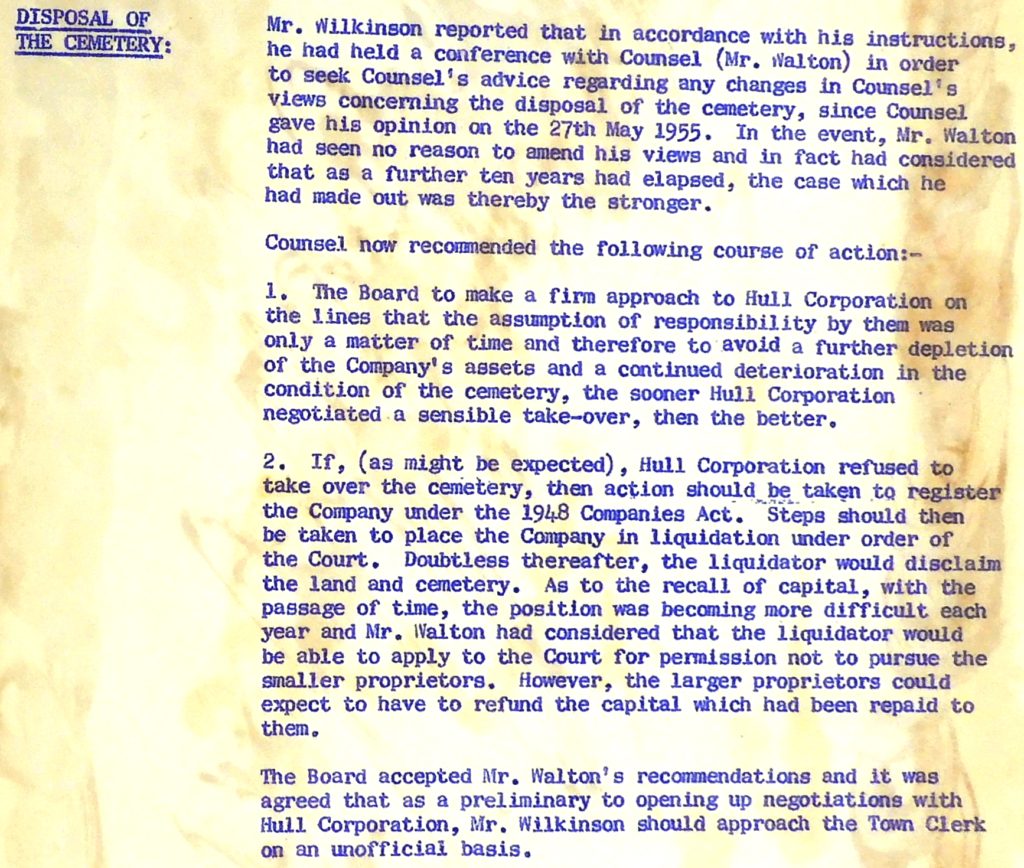
At the next meeting of the Board on the 27th August 1968 Mr Wilkinson reported back. He said that although the Corporation were not unsympathetic to the Company, they said they themselves did not ‘have the resources to take the initiative in the matter.’ As such the Corporation said the Company ‘must do what it thought fit.‘
The plan
Upon this news the Directors decided to undertake another plan. This was to list the Company under the Companies Act 1948. Taking this approach meant that the Company could apply to the Courts to be liquidated under that Act. The Extraordinary General Meeting (EGM) of the proprietors that would vote on this issue was to take place on the 11th August 1970. The Board were confident it would be approved.
At this meeting 10 proprietors attended, owning 153 shares between them. The chair outlined the situation facing all those present after which the outcome was a foregone conclusion. A resolution was put forward from the floor and it was unanimously accepted.
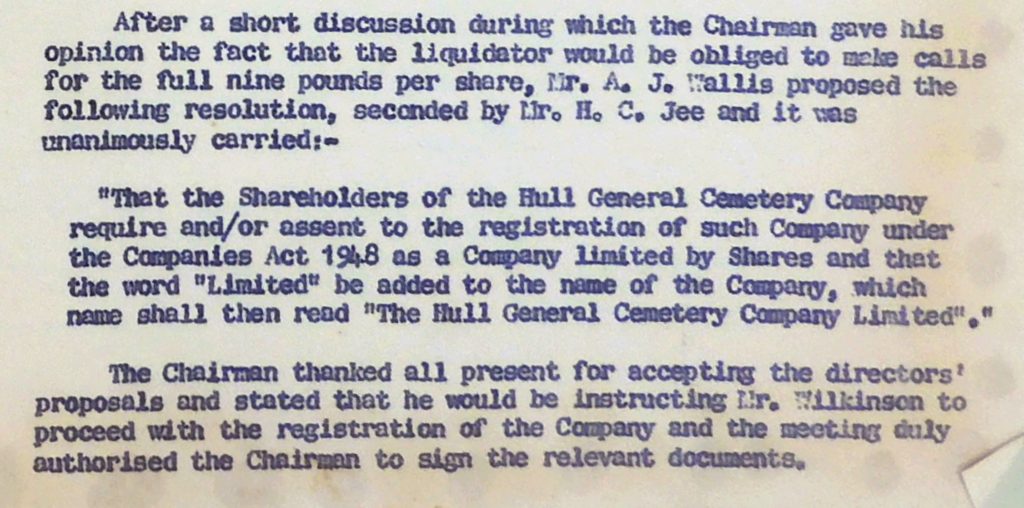
From now on the liquidation of the Company was simply a matter of when. Over the next 20 months the process of liquidation followed its legal course. By May 1972 everything was in place for the Company to be terminated. And then, at the eleventh hour, an outside intervention occurred.
Mr Dennis
On the 22nd May, at the Law Society Offices, Bowlalley Lane, another EGM took place. In an unconscious ironic twist of fate both this and the final shareholder’s meeting took place in the very building that the first meeting of the Company had taken place in back in 1845. Out of the 967 shareholders known to the Company only seven were present. However those present did own the majority of the Company’s shares between them.
At this meeting in May, Clifford H Ashburn, the chair, invited a Mr Dennis to speak. This young man, a Hull University graduate and now a businessman in a property company, outlined his proposal.
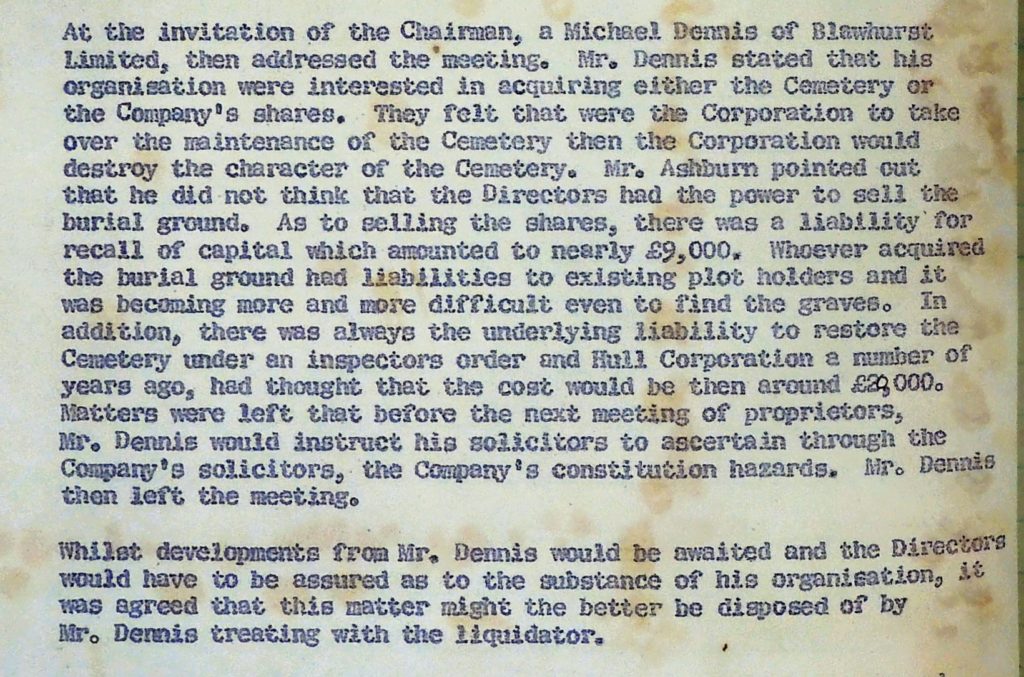
The chair had invited representatives of the local press and radio to this meeting. As such this late intervention was reported in the Hull Daily Mail the following day.
Under the headline ‘Hull Graduates Want To Buy Derelict Cemetery’, Mr Dennis’s scheme was explained. The article went into much more detail than the Company minute books. In essence it’s an intriguing ‘What If…’ aspect of the long history of the cemetery.
Counterfactual
As the historian Hugh Trevor-Roper once said,
‘History is not merely what happened; it is what happened in the context of what might have happened.’
And with the intervention of Mr Dennis we have a perfect opportunity of imagining such a thing in connection with Hull General Cemetery. Could such an intervention have succeeded? What would have been the likely outcome over time?
On the credit side the Cemetery Company was not in debt. It still owned two properties. Yes, these were up for sale but that sale could be withdrawn. On the debit side it had no staff and the site was totally overgrown and shabby. However this last point appeared to be a credit point to the prospective buyers. In effect the site could have been transferred and the new owners have put into place their own plans. As long as the new owners closed the burial side of the business which the Company had already begun to do there would have been no legal objection that could have been sustained by the Council.
What then could have occurred? Mr Dennis said that a fence would be erected around the site. This would have been quite an expense. He also said that certain headstones and memorials would be made safe and restored. Once again this would have been an expensive undertaking. Other than making the paths of the cemetery passable no other work was envisaged. I would suppose that routine maintenance of the trees would have taken place to make sure they would not damage the stones but beyond that the site would be left in situ.
Income generating?
Mr Dennis did not say whether the venture would be income generating. However he was a businessman, even if he had long hair and ‘outlandish’ ideas, so it’s possible there was a germ of an idea to make money from the site. We do not know. However we can hypothesise.
Mr Dennis may well have foreseen that such a site could potentially generate money as a ‘heritage’ resource. We are all familiar with visiting country houses etc but accessing other sites rich in heritage is also viable. Possibly Mr Dennis may have had such an idea that the site could become such an attraction. With the rise of genealogical studies in the 1990s such sites became much more popular. Guided tours of the historic monuments (for a price) could have taken place. Accessing both local and central government funding for environmental and bio-diversity work could have also generated significant income. Another form of income generation could have been leasing it out as a film or television set. One can imagine how this could have been successful.
By the millennium the site could have become a self-sustaining part of the rich fabric of attractive heritage and natural highlights of the city.
Meanwhile back at the meeting, and the press report that followed.
Plastic people
The article began by stating that,
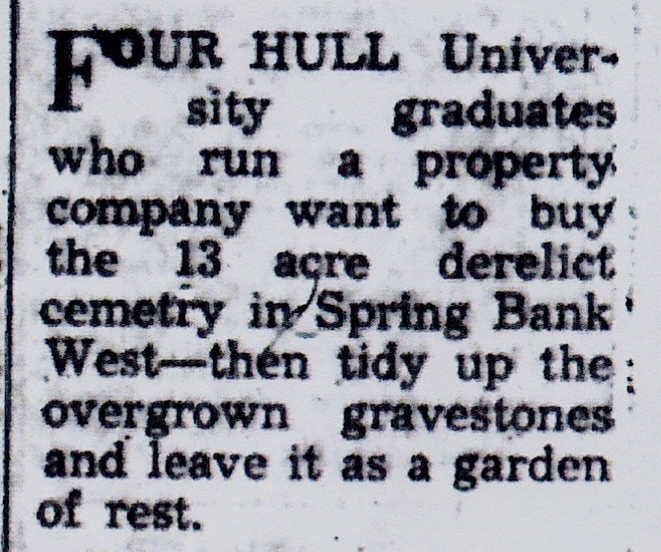
Mr Dennis, the representative of the graduates, stated,
‘that he feared the Hull Corporation would take over the cemetery, and by flattening it out, make it “a ghastly and tasteless plastic graveyard for plastic people.”.
Mr Dennis channelling Frank Zappa there! And of course he wasn’t far wrong in that assessment as a previous article pointed out. A Monumental Loss
Warming to his theme he outlined the plans he and his fellows had for the site,
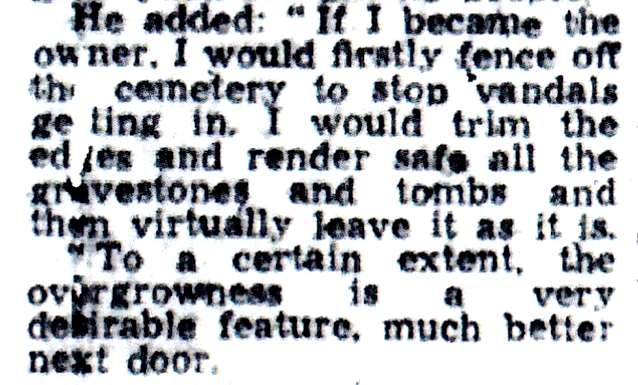
This was perhaps not what the present owners wanted to hear. They had lamented the state of the cemetery for the best part of 40 years without paying for its restoration. Now, sat in front of them, is this long haired ‘hippie’ saying that he and his fellows preferred this state of affairs and indeed wanted it to continue. One can imagine their consternation at this news.
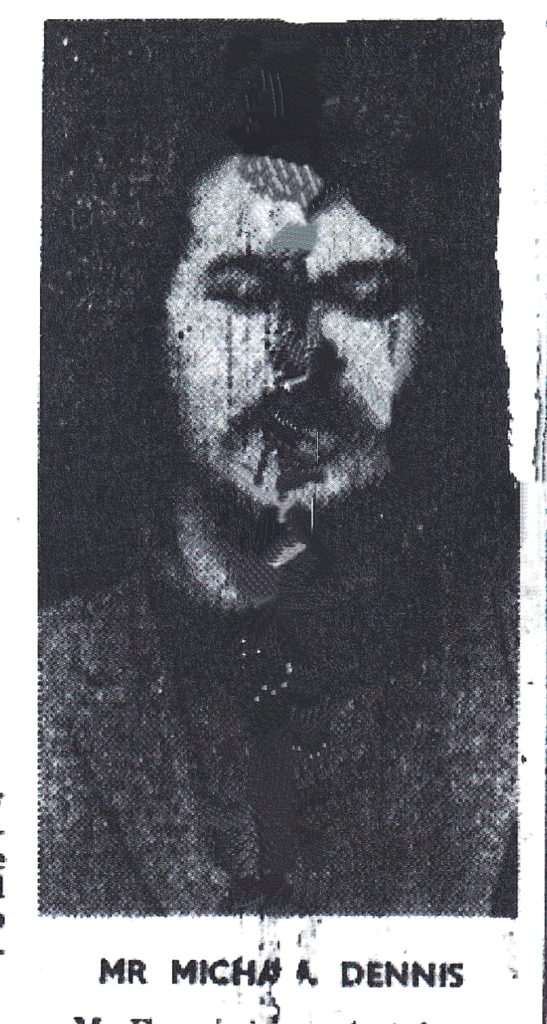
Under the paragraph heading, ‘Not Crazy’, Mr Dennis further outlined how he would take control of the cemetery,
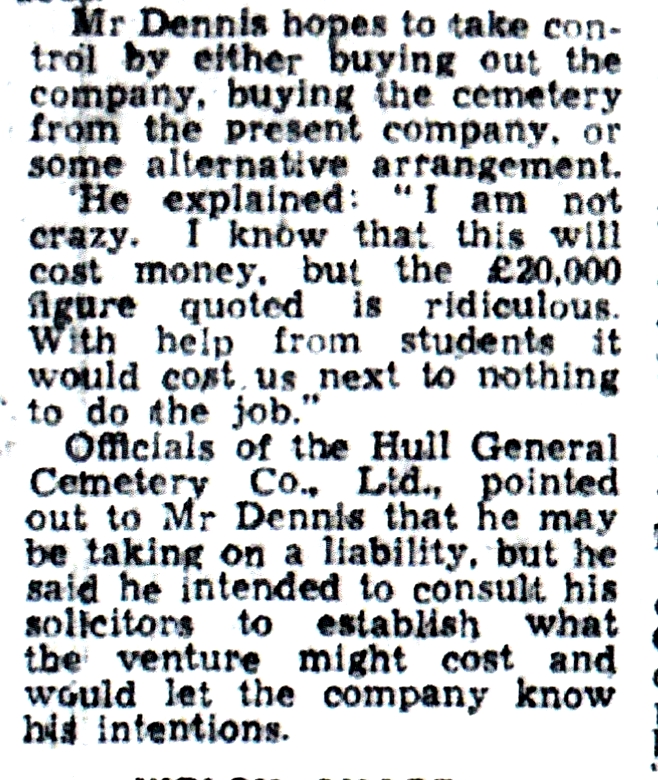
In the Yorkshire Post Mr Dennis was quoted as saying,
‘I want to buy it because it is a nice place just as it is – as long as it will not cost me too much. You could say I just want it as a garden. Let the place rest in peace whereas if the council got hold of it we would have council officials marching all over it, levelling it out. Many people enjoy looking around it in its present wild state. Let them enjoy the pleasure.’
He also said in the Hull Times that he did not want the Corporation, ‘to take over the cemetery, to make it into a second Queens Gardens.’
Cold water
At the end of the Hull Daily Mail article the chair of the Cemetery Company poured cold water on this plan. He said he did not think it was possible for Blawhurst Limited, of which Mr Dennis was a founder, to buy the cemetery.
‘For one thing it may be too late to do anything now as we are well on the way to having the Company would up. It must be in doubt whether Mr Dennis’s company have enough cash. There are also various legal complication to be considered.’
With that cold assessment we now move on to the endgame of the Cemetery Company and to the final meeting of the Company. However, before we enter that meeting room for the last time, the intervention by Mr Dennis and his associates caused some ripples beyond the room.
The cat is out of the bag
On the 31st May, eight days after this meeting, the Joint Under-Secretary of State at the Department of the Environment (DOE), a Mr Keith Speed, revealed that Hull Corporation had already enquired for a direct grant from his department to ‘tidy up the dilapidated 127- year old cemetery.’

Sir Keith Speed, as he later became, was the minister for the Navy and was sacked by Margaret Thatcher in 1981. He had publicly disagreed with the cuts taking place on the Navy that she and the defence minister John Nott, were imposing. A year later, with the Falklands War, his assessment was proved correct. Naturally enough he was never forgiven by Thatcher and he was only knighted after she had left office. He died in 2018.
This embarrassing revelation for the Corporation came about, probably much to the Corporation’s chagrin, via the West Hull M.P. James Johnson at the time. He had received a letter from the DOE after he complained about the state of the site. So, contrary to past denials and negative pronouncements about the site the Hull Corporation were seeking to acquire it. But they did not want to buy it but ‘inherit’ it.
A clarification – of sorts
Responding to this news, Sir Leo Schultz, the leader of Hull City Council, said, ‘It was impossible at present to say whether the Corporation would step in.’ This statement, made no doubt to cover for the Corporation’s earlier machinations in applying for a DOE grant, continued,
‘There were plots which people had bought in the area but had not taken up, and the public still needed access to graves in the cemetery. The company is still using it as a burial ground, I understand, so we have commitments regarding it. this means we could not take steps to clear it up until the company has totally completed its business.’
The phrase, ‘to clear it up’, perhaps already shows the Corporation’s plans for the site. Ominously Sir Leo Schultz went on to say,
‘That in any case the Spring Bank area was not the only cemetery in the city which was untidy and needed attention. There were old cemeteries such as those near Division Road and Sculcoates Lane which also must be looked at under the clean-up scheme’
And so they were cleared up, with the significant loss of heritage assets such as the headstone of David Garbutt, the man behind the Avenues project, in Division Road. In Sculcoates Lane the destruction of the chapel that Greenwood in 1835 said was a great artistic piece of work was another blow to Hull historical record. ‘Clean-up’, as a phrase used by the Council at this time, surely should have struck fear into any historian.
The final meeting
The final meeting of the Company shareholders took place once again at the Bowlalley Lane site. The date was the 1st of June 1972. At this meeting two resolutions, unanimously agreed by all present were put forward. The first was that, ‘The Hull General Cemetery Company be dissolved.’ and the second stated, ‘That the Hull General Cemetery Company Limited be wound up in Court.‘
The shareholders then had to deal with the intervention by Mr Dennis and his associates. The shareholders had already agreed that they could not countenance this deal. As the minutes show,

It was only after the press were informed of this decision that Mr Dennis was asked to join the meeting. There he was not told that his offer had been rejected. He was asked to explain his offer once again which he did.
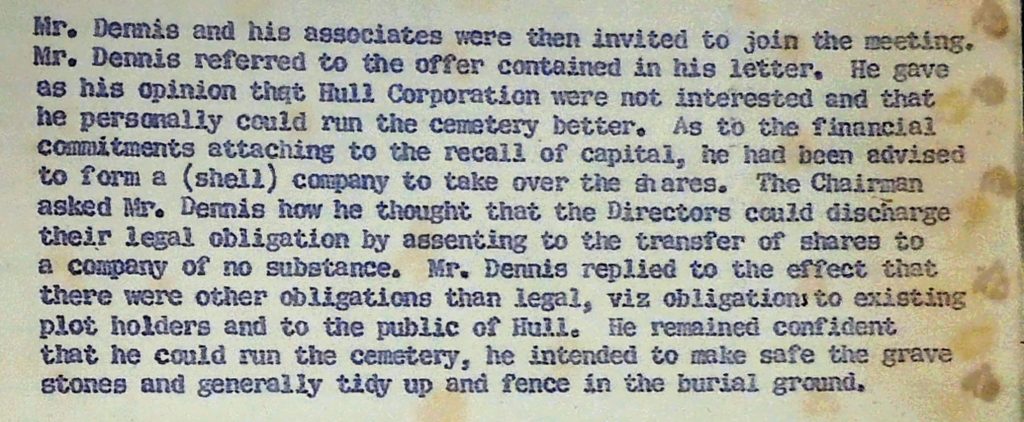
What a novel idea
This approach would not have endeared him and his associates to the shareholders. He was saying that the cemetery, as it stood, was fine. That he could continue to run the cemetery as a business but that would not be its main function. Its main function would be as a site of historical and environmental interest. In essence Mr Dennis was stating something that to us today is quite normal but to the ears of the shareholders it was not only novel but dangerous. Indeed Mr Dennis was articulating what the Spring Bank Cemetery Action Group and the Friends of Hull General Cemetery said later. That the combination of both nature and history complimented each other and should be preserved as much as possible. That in it’s present state (in 1972) it was attractive and informative. The shareholders must have thought the young man was mad.
Back at the meeting
Meanwhile back at the meeting,
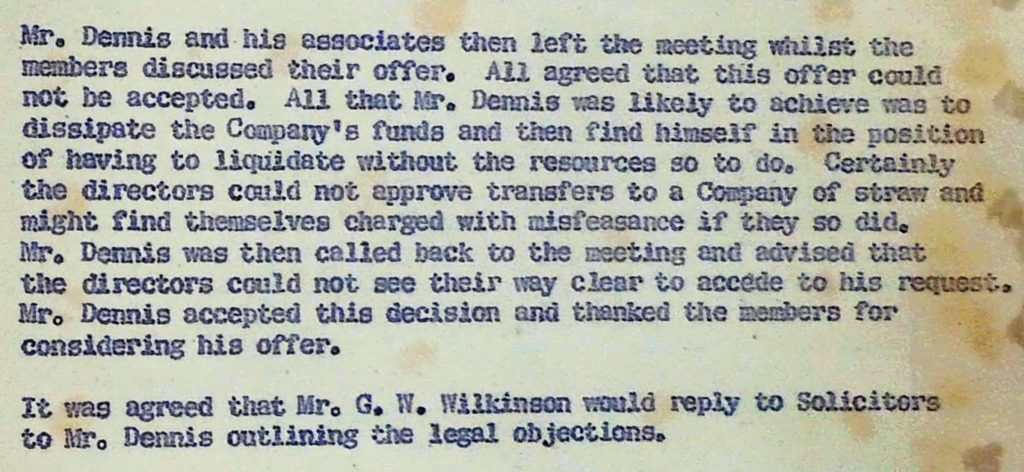
So the last chance to preserve the beauty of the Cemetery as it was was lost. That the directors stated that Blawhurst Ltd was a ‘company of straw’ is ironic as it is still one of the leading rental property owners in Hull. Once again one wonders what if the directors had gone along with this scheme what would we now have today on the site? A fruitless exercise I know but sometimes one can’t help playing such mind games.
The final minutes of the final meeting of the Hull General Cemetery Company were never signed off as no further meeting took place. In 1872 the Marie Celeste was found floating in the Atlantic with no one aboard yet still appearing as if it was crewed. One hundred years later so must the Hull General Cemetery have looked. The site continued to exist, the stones still stood in serried ranks, the wild things still scurried around and the trees and bushes still encroached further on to the paths. The site did not care a fig for legal obligations or who owned what. It just did what it does today; it continued to exist.
Hull Corporation come clean
For 18 months the site was ownerless and then things changed. On December 14th 1973, under the headline, ‘City to buy derelict cemetery’, the open secret that the Hull Corporation would take over the site was revealed finally.
The article went on to say in an unflattering way, and it must be said that the Hull Daily Mail was one of the site’s severest critics. It never failed to use the word ‘eyesore for the site.
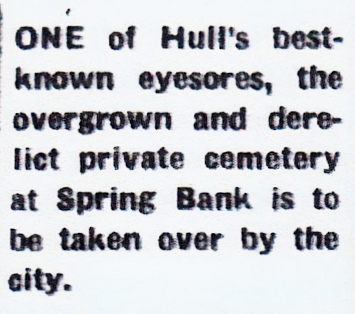
Perhaps more sinisterly, the plans for the site were expounded by Mr J.A. Milne, the Director of the Council Leisure Services Department.
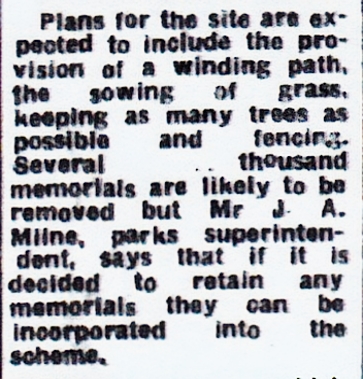
This is where this part of the story ends and the next stage of the story is already on this website. Please read it and realise what we have lost. A Monumental Loss
Postscript
I attempted to contact Mr Dennis back in 2016. I was intrigued by this whole episode as I hope you are. He had since retired from his role as a Director of Blawhurst Ltd and now lived in Devon. Sadly I never received a reply to my enquiries and perhaps he felt that, as L.P. Hartley said in The Go-Between, ‘The past is foreign country; they do things differently there.’ Like us all he perhaps feels that his youthful indiscretions should remain hidden and forgotten. Who am I to argue with that? It is a shame though.
Postscript Two
This is my last piece as editor of the website. It some ways it seems quite fitting to end with the end of the Company. It’s almost as if I had planned it that way which I assure you I hadn’t. I hope you have enjoyed these glances at some pieces of forgotten and ignored history. I hope you continue to enjoy the website and the cemetery itself for as long as you want to. Bye.
Pete Lowden is a member of the Friends of Hull General Cemetery committee which is committed to reclaiming the cemetery and returning it back to a community resource.



